Contact: mahinazima@yahoo.com
For more information about the works or interest in purchase please email.
Biography: "A few words"
Tehran is the city where I was born, grew up and went to school. Throughout my school years I was attracted to things that were associated with the arts, and had a special love for painting. I sat for the entrance exams to the School of Fine Arts at Tehran University in 1948, and I was the 14th girl in the country to enter that school. Initially, we were lodged in the old building of the famous Tehran University. Then, we were transferred to the more modern accommodations where we shared courses with students from the School of Architecture. We had classes in the history of arts, artistic anatomy, design and decoration. I worked hard and I was fond of talking with older students about things related to the different schools of art and the great masters, Cezanne, Van Gogh and Gauguin.
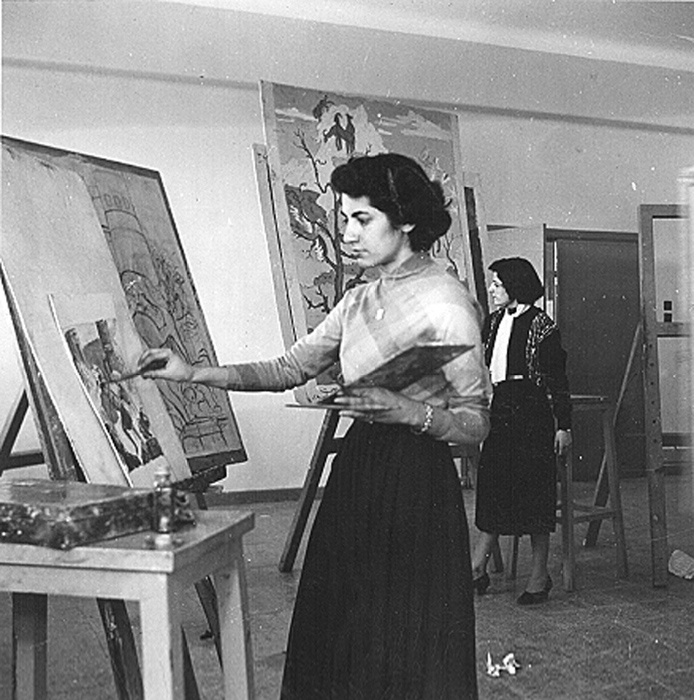
My classmates were good people; genuine friends who formed a warm and welcoming circle. At the architect's atelier, work was hard and serious, but the painters' atelier had a different atmosphere. In one corner there was a gramophone. Students listened to Beethoven, Bach and Mozart as they worked. Among our friends was Manuchehr Shaibani, who was to become a distinguished poet and painter. He had a delicate physique but a strong voice. He would walk fast around the room and recite his poetry. Sohrab Sepehri, who was to become renowned for his work as well, had a totally different personality. He was always quiet, and would read his poetry only on the insistence of friends, sitting in a corner. Music always played in the background. Other students, some of whom were to become famous, such as Esma'eil Shahrudi or Sadeq Barirani, would often join us.
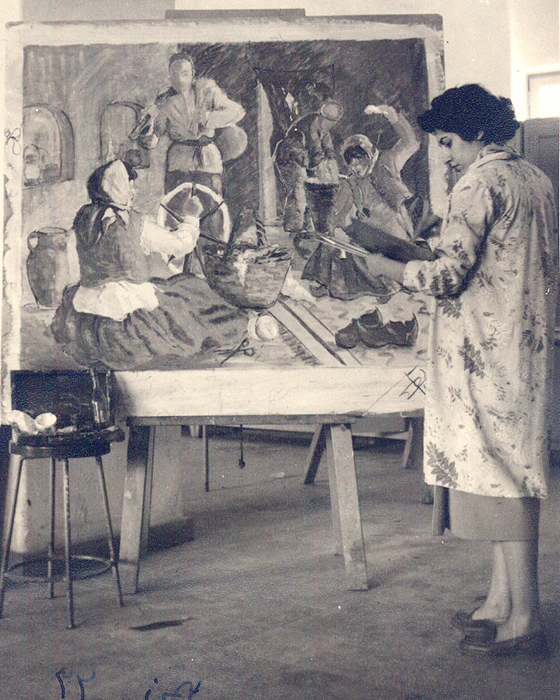
In those years politics was a hot topic on the campus. Students would often march from the university to the parliament. Many students, like me, were not affiliated to the right or the left wing of the political spectrum. But we would sometimes join the demonstrations. There was a certain pleasure in this and of course the experience was important for us as youngsters. After one particular student strike, and after the university re-opened, a newspaper photographer took my picture as I was entering the university gates showing my card to the guard. The next day my picture appeared in the national daily Kayhan with the headline "universities now open".
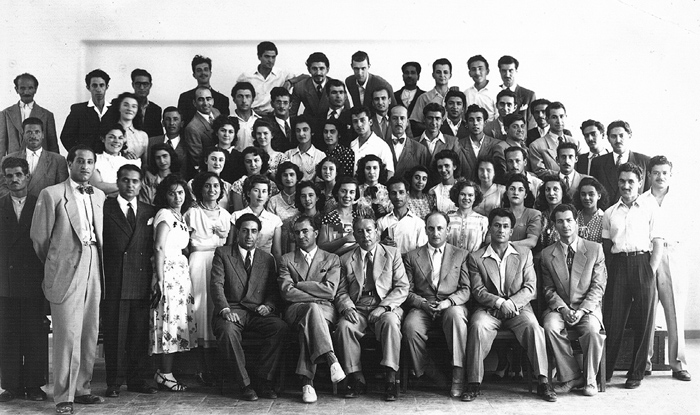
There is a story from those days that is worth recalling. When the new Iranian year, Nowrooz, arrived in spring male students were allowed to go on tours to various parts of the country. However female students were not allowed to do so. In my last year, the girls decided to write and present the chancellor with a petition asking for the permission to be allowed to go on a similar tour. Then, every day, one of the girls would go to the chancellors' office and ask about the request. Finally the chancellor and the head of the department agreed. When the New Year arrived, in 1953, we were the first group of girls to be allowed to go on an educational art tour of Esfahan, Shiraz and the Persepolis. The trip was wonderfully educational and we learnt so much from it. God knows how much us young girls, in our free spirits, enjoyed the trip.
After graduating from university in 1953 I met Mas'oud Barzin. He was a writer and a translator. We married three years later, and had three children, Saeed, Shahin and Golbarg. They are a source of pride for me.
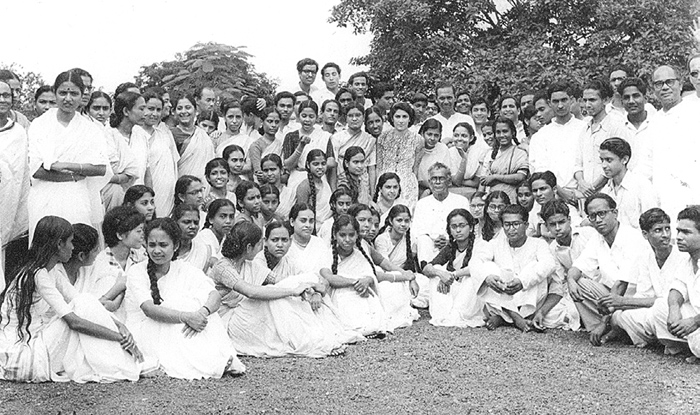
I received a bourse from the Indian embassy to go to the Visva-Bharati University in 1956. The university was founded by the famous Indian poet Rabindranath Tagore. At the time my first child was 11 months old and for this reason I was not able to continue with my studies and came back to Iran after a short visit.
In Tehran I was employed by the Ministry of Education. At the time my mother, Effat Mote'i, was the licence holder and the head teacher of the Mahin Educational Institute. I started to work with her as the headmistress of the school and I also thought the art classes. When I was free I would paint for myself but I never had enough time to do what I wanted. Nevertheless it was a great opportunity to experiment and learn.
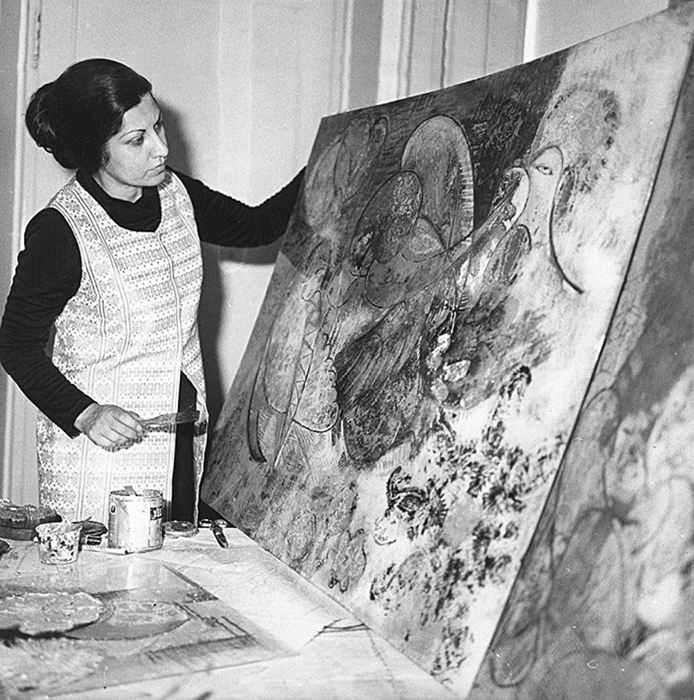
In 1967 my husband was sent on a mission to the southern oil port of Abadan. There the responsibility of a charitable association was given to me. One year there were severe floods in the southern regions of the country. Accompanied by a number of other women from the charity, we went to visit the stricken areas and help the victims. Among the humble belongings of the flood victims I noticed a number of small reverse-glass paintings. They were simple and genuine expression of the lives of their humble owners. Several things surprised me. First, the impact of art on ordinary people, and the need that ordunary people have for the arts. Secondly, that this fragile form of artistic expression - i.e. reverse-glass painting - had been forgotten and abandoned in Iranian society. I was saddened to see that this art from, which was once the jewel in the crown of arts in our country, had been neglected in such fashion by the merciless passage of time.
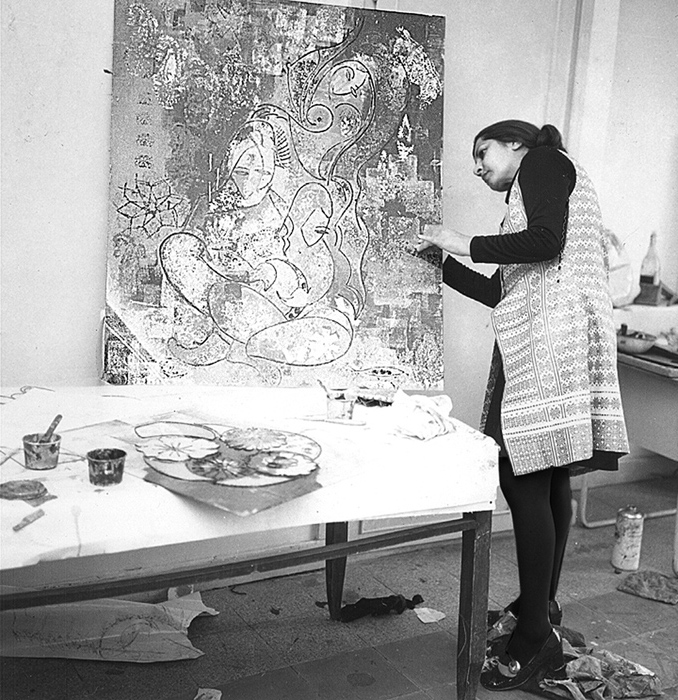
On that day I made a conscious decision to paint and work on the back of glass. Since then I have been painting and expressing my emotions in this form. My understanding has always been that the artist should not be a stranger to his/her time but promote fresh concepts and ideas. I took a step into the world of glass, with the idea of innovation and creativity, in close quarters with Iranian traditions and in order to express my emotions through capturing the environment around me.
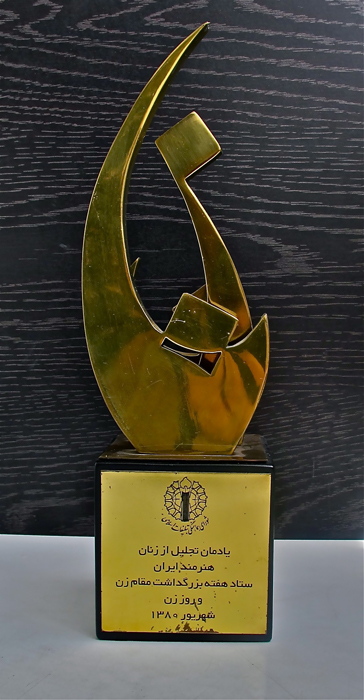
Award in honour of women artists in Iran - Women's Day 2001
This art form is not known as much as it should. Historically, it had humble beginnings but gradually became popular in the royal court in Iran. From then on, images of royal women and scenes of feasting or hunting appeared on the back of the glass. However, there were only a limited number of painters engaged in this art form. Some of the better known figures were:
- Aqa Sadeq, whose work can still be found in the aristocratic homes and guest halls of Fars province.
- Seyyed Qafar Esfehani who painted religious themes.
- Satar Khan Zanjani who worked on the images of the Shi'i saints.
- Mirza Abolqasem, the calligrapher who worked on the behind-the-glass form.
- Mirza Mehdi Shirazi the master painter of Qajar period.
- Haj Baqer who worked on the images of flowers and birds.
- Finally, Abdol Jalil who is famous for his images of the women of Khuzestan province.
With the passage of time, this mystical form of Iranian painting has been forgotten. Many works of art were damaged, broken or lost. My intention has been to breath life back into this art form. In my understanding, art is an interpretation of nature, not an exact representation. The artist works with the imagination. However, I don't like sadness in my work. Learning from experience that glass paintings break easily I now work on non-breakable glass. In order to give greater dimension to my work I also use, in a limited way, the front of the glass too.
In the past few years I have had a number of exhibitions. My works have found their way to museums and private collections. I like to see other people having and enjoying my works but it saddens me to depart from them.